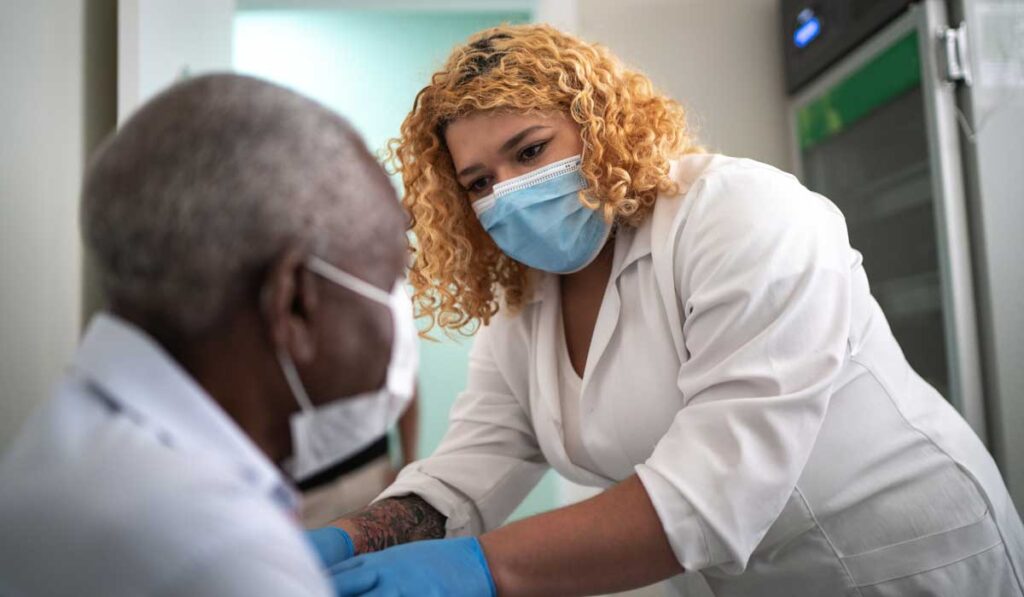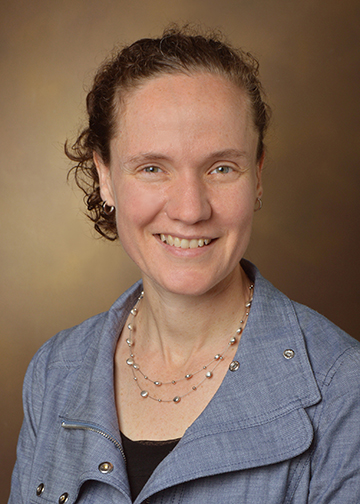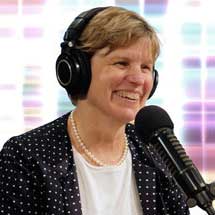A growing number of people have been enlisted into an initiative — informally dubbed “Arie’s Army” — that for a decade has introduced the existence of unconscious bias to groups, committees and departments around Vanderbilt University Medical Center.
Their leader, Arie Nettles, Ph.D., professor of Clinical Pediatrics, founded the Office of Inclusion and Health Equity. She’s determined to lay the framework for as many people as she can, with the eventual goal being every single employee at the academic medical center, to do what she calls “the work on the self” to identify and bust through unconscious bias.
Nettles sat down for this interview several months before unconscious bias rocketed to the forefront as millions of Americans started to wonder about what latent biases tint their perception of society and people as protests for Black Lives Matter marched on streets across the nation and the COVID-19 pandemic put longstanding health disparities on stark display.
That unconscious bias, which is unintentional and automatic, can seep into actions when left unchecked is novel to some. For Nettles, that’s an opportunity to teach people to take a moment and reflect. In fact, it’s been the nucleus of her professional life for 10 years.
“When they say, ‘Oh, I’m not I’m not biased, I’m not biased.’ When you think about the 11 million bits of pieces of data, and then this is really part of research as part half our brain works. If it’s without awareness, without intention, and without control, there’s bias,” said Nettles. (2:44)
Unharnessed Bias Can Negatively Impact Health
If our brains are working on autopilot and not making intentional decisions, we’re operating from our bias. It’s that simple.
What’s less simple, though, is how to overcome bias and begin to harness our thoughts and subsequently, change our behavior.
And in health care, if we’re on autopilot while our brains are processing millions of bits of data, the collective outcome can be detrimental. Negative impacts can be reflected in patient outcomes and the representation of people in leadership positions. (3:37)
Nancy Brown, M.D., former Chair of the Department of Medicine at Vanderbilt University Medical Center and the current Dean of the Yale School of Medicine, talks about the necessity of reminding leaders to look beyond their inner circle, or even beyond those who always raise their hands for new opportunities, to intentionally seek new voices, perspectives and mindsets. She borrowed an idea from a peer about putting out a request for proposals to size up interest when leadership opportunities arose — the results can be illuminating.
“Whenever we do that, we find that there are very talented faculty in in the department who have interest that we didn’t appreciate,” Brown said. “And even if we don’t tap them for that job, we now know that they’re interested and we may start developing them in areas for the next job. So I think it does help to broaden the numbers of people engaged in leadership and the diversity of folks in our leadership.” (25:31)
Taking a Pause
Career paths are forged around the bias of others — sometimes it’s visible bias, other times it’s not.
As a refresher before weighty discussions, Nettles talks to search committees for 10-15 minutes as an unconscious bias “booster shot.” (22:37)
“Our initial response to things sometimes may require a pause so that we can stop and think about how we are responding to something,” Nettles said. “Is it something from my background that triggers some type of thought? Or is it something, like a cold glass of a beverage as opposed to a hot beverage? You know, there is research to show we can make decisions based on just simply what we’re holding and in our perceptions.” (22:43)
Relics of Old Business Models
The bias that’s built into traditional systems — similar to inefficient waste in the business model — can take people by surprise once they become observant or experience it.
Kyla Terhune, M.D., MBA, Vice President for Educational Affairs and Associate Dean for Graduate Medical Education, recalibrated her outlook on the importance of networking opportunities for women and people who are underrepresented in upper echelons of health care. A hard worker with ambition to treat patients and advance medicine, she expected work ethic and results would be distinguishing on their own. (14:16)
“I’ve always thought that, that what I have in common with people who have been my mentors is really the commonality of medicine, of serving people, of thinking about human organizations and teaching and education,” said Terhune. (17:03)
Yet over time she recognized that many of the venues for relationship building — i.e. the golf course — came with a preexisting set of expectations and bias. (15:19)
“I think that all of us feel like we can go through our studies and through our work, just putting our head down doing the right thing,” Terhune said. “And as you advance, you recognize that, actually, networking is very important and it’s very difficult if you limit your networking to the workplace.” (14:56)








